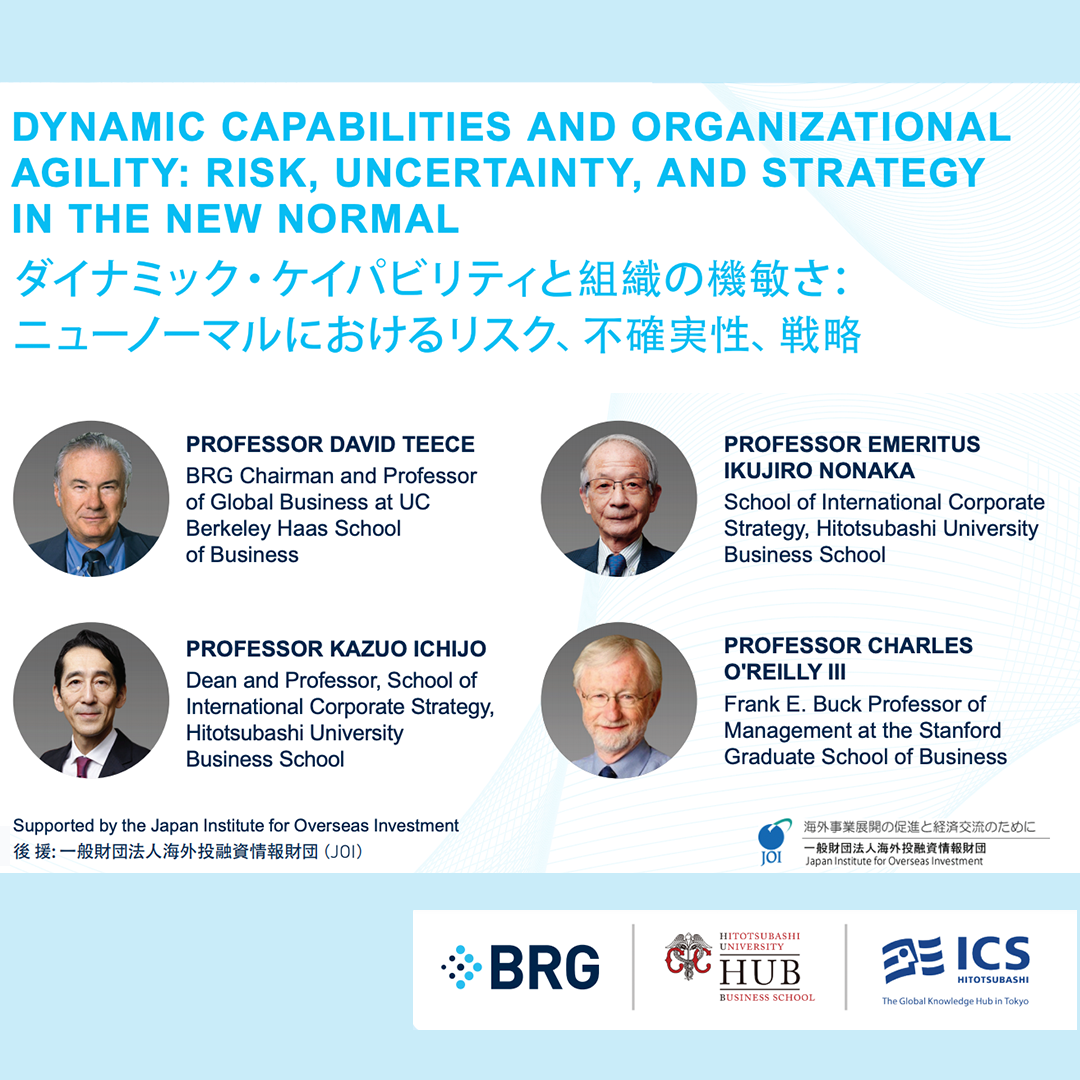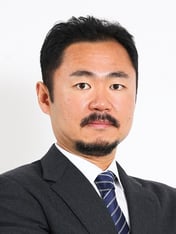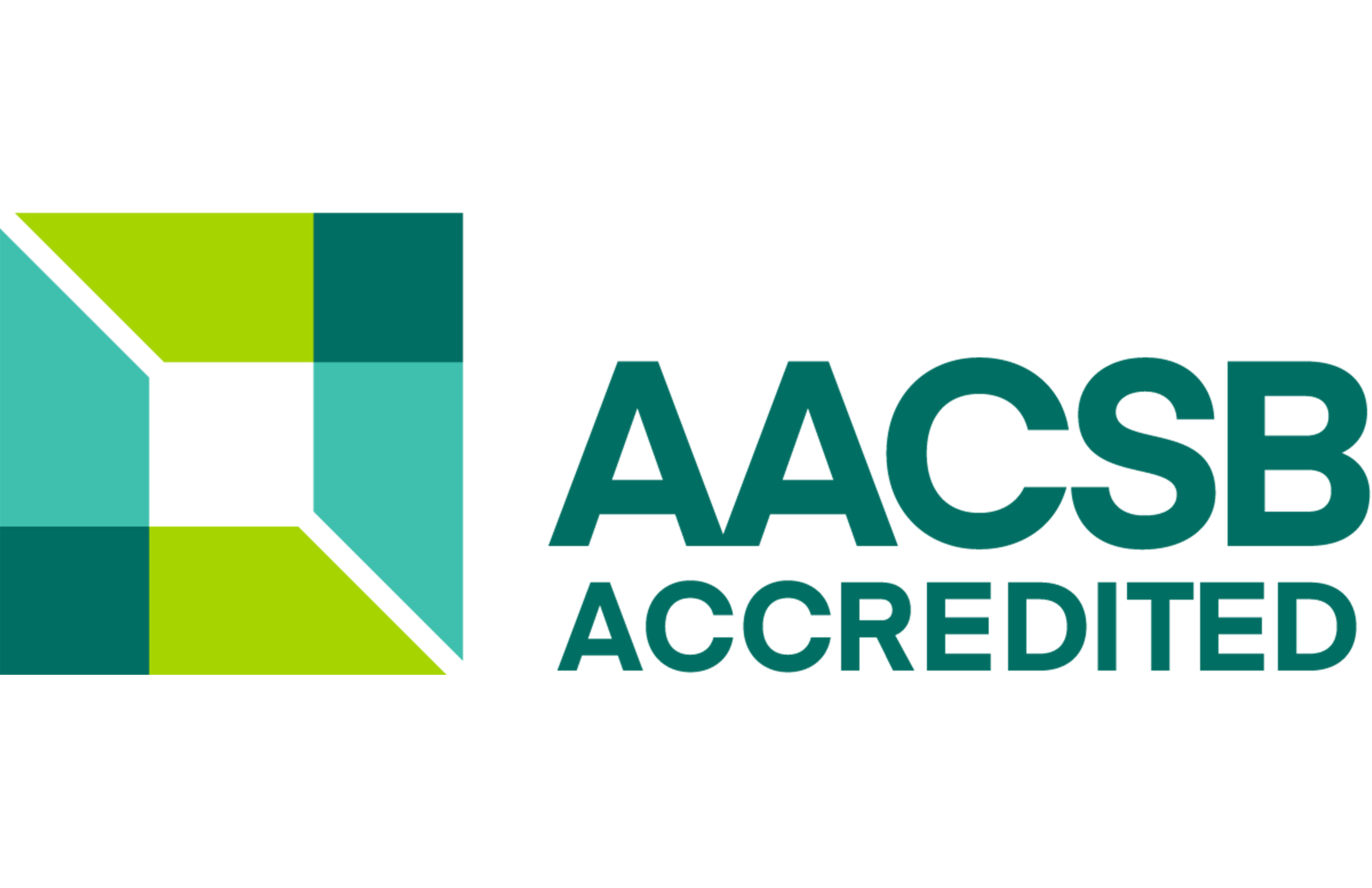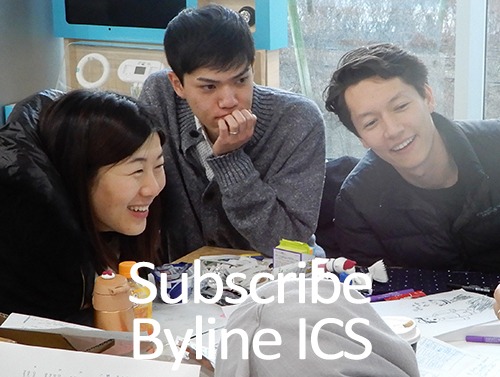On January 26, 2021, a webinar titled “DYNAMIC CAPABILITIES AND ORGANIZATIONAL AGILITY: RISK, UNCERTAINTY, AND STRATEGY IN THE NEW NORMAL” was hosted by Hitotsubashi ICS and The Berkeley Research Group.
Dean Kaz facilitated the 90-minute webinar, where three prominent professors gave presentations followed by a Q&A session.
Norio Imai, a DBA student of Hitotsubashi ICS shared the event report with us.

Professor Nonoka initiated his speech about humanizing strategy and knowledge maneuverability under the VUCA environment. He stressed the importance of human experience for innovation because all knowledge is created out of the direct experience. Within the SECI model[1], socialization initiates the process because people absorb and create tacit knowledge from others, things, and the environment. AI and technology alone cannot perform such tasks.
Professor Nonaka also described the three pillars of knowledge maneuverability; 1. purpose based on the common good, 2. empathy, and 3. dynamic and fractal organizations with decentralized authority. Organizations with knowledge maneuverability can create, share, and practice appropriate knowledge quickly and dialectically for the common good. Therefore, wise companies with knowledge maneuverability can archive creativity, speed, flexibility, and resilience.
Professor Nonaka closed by describing the way to an ideal future, which is to create infinite cycles of cultivating wisdom based on practice and experiences.
Next, Professor Teece presented his dynamic capability framework which is essential under deep uncertainty because traditional strategy frameworks don’t suit in a VUCA environment. Wise leaders with an entrepreneurship mindset are important to prevent companies from focusing on building ordinary capabilities for efficiency. Dynamic capabilities fall into three categories of sensing and sense-making, seizing, and transforming to figure out the future and to execute quickly. Sensing is the ability to see around the corners and to sense latent demand. Seizing is about execution with a sense of urgency and making decisions before all the information comes in. Xerox is an example of good sensing but poor seizing since they failed to realize the opportunities of all the PC elements they had developed. Alignment and integration of different assets inside and outside of companies are also fundamental, which Apple managed successfully in building ecosystems through orchestration. Transforming is required because companies that experience success evolve in a path-dependent way which would hinder their reconfiguration. In order to be a truly innovative and successful company, Professor Teece argued that good strategies with diagnosis, guiding policy, and coherent actions are required on top of dynamic capabilities to build long-term competitive advantage.
Lastly, Professor O'Reilly III explained ambidexterity, defined as running current core and future innovation businesses in one company concurrently. He also echoed the disruptive environment and failure of leadership to play two games simultaneously partially due to cultural lock-in. Comparing Kodak with Fujifilm, he asserted the importance of alignment of strategies and organizations. To deal with structural and cultural inertia, professor O'Reilly referred to three disciplines which are ideation, incubation, and scaling. This is in line with Professor Teece’s terminology – sensing, seizing, and transforming. Amazon manages this well asking themselves; Does it enhance customer experience? Can it grow into a large business? Can it provide get returns on invested capital? AGC is a great example of a Japanese company that is good at this, in which they have a distinguished core businesses with alignment of efficiency from strategic businesses with potential growth and shifted assets and capabilities toward those new businesses. Professor O’Reilly stated that he learned five key lessons from AGC’s success; an aligned senior team, maintaining common identity as a company while separate sub-cultures for each unit exist, creating separate units for new businesses, integrating these units by top management teams, and a long-term commitment by the leadership.
During the Q&A session, Professor Teece pointed out the coherence among three professors regardless of different ways of wording in this webinar. In answering a question that asked why Japanese companies cannot act with speed, Professor O'reilly answered that it's not necessarily a bad thing and that speed won't prevent them from changing and adapting themselves to environmental changes.
Hitotsubashi ICS would like to thank Professor O’reilly, Professor Teece, and Professor Nonaka for their insights.
[1] The SECI model describes the dynamic process of knowledge creation throughout the organization as an upward spiral, one that involves four steps: (1) Socialization (empathizing with others and the environment to feel and sense reality), (2) Externalization (engaging in a dialogue to identify and conceptualize the essence of reality), (3) Combination (putting those different concepts and ideas together to develop a wholistic, coherent system, theory, and/or narrative), and (4) Internalization (practicing such a system, theory, and/or narrative through action).

Norio Imai | DBA Student
Before joining Hitotsubashi ICS, he has managed various projects in Google Japan including the first campaign at YouTube, the launch of Google Analytics 360 Suite, and Google Assistant businesses with 3rd party electronics manufactures.
While he tackles his research regarding digital transformation as a DBA student, he works as a primary staff of the Digital transformation forum, a non-degree program of Hitotsubashi ICS. Norio holds a Master of Science in Integration Marketing Communications from Northwestern University.









